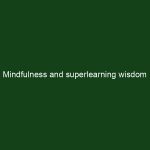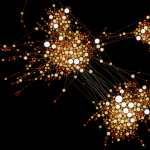While superlearning ultimately is a way to gather knowledge, it is not the way to generate wisdom. In one of the future posts we will describe information vs knowledge vs wisdom, but for now we just say that wisdom is a way of using knowledge properly. In fact it is very much alike the difference …
Optical illusions and how the brain tricks us
The first thing we teach in our superlearning classes is brain trickery. We trust our brains without questions and do not suspect them to lie. However, when trying to recreate a whole article from memory we typically start from ~20% retention! In fact we loose much more than we get, unless we train our observation …
Continue reading “Optical illusions and how the brain tricks us”
Spaced repetitions toolset
We teach spaced repetition all the time, yet I do not know how to make them a generic tool for every student. The main challenge here is finding balance between effort of learning, complexity of the material and motivation to know. Yet it does not matter which strategy you choose, you can use the same …
Remembering dates and numbers
Many of our students love to read historical material. Almost any field of knowledge has its own history. History comprises of historical processes, heroic leaders, some interesting statistics, and lots of names, dates and numbers. The discussion below deals with remembering dates and numbers. Mario Laf Remembering dates I have read that using dates with …
Generating interest with long boring texts
How do we read content that is genuinely boring? Why, we generate interest in any way we can. Interest is a key component for retention, it focuses the mind on the content, on the markers, on links and so on. One of the surprising fact we found, was that fast readers had higher retention than slow …
Continue reading “Generating interest with long boring texts”
How to learn grammar of foreign languages
Jonathan is trying to learn several languages in the same time. After mastering the vocabulary using mental markers and spaced repetitions, the next question was more complex. How can I quickly learn grammar? Grammar is difficult. It is hard enough if you want to perfect your English. It is much harder with other languages since …
Continue reading “How to learn grammar of foreign languages”
Visualization exercises
Some of our students have trouble actually visualizing the markers and need specific exercises. These exercises could be used with every level of visualization, but with different scope and complexity of objects. Heber Cloward Try holding real things and re imagining them for practice . It seems the more you practice the easier it …
Advanced superlearning course
For years I have been teaching the “advanced” course and yet I had only a handful of students. Advanced course teaches high-level visualization, linking large amounts of information, prioritization of information, powerful prereading and other interesting superlearning techniques. What is not a part of the advanced course The “advanced” course does not handle speedreading and …
Flash games recommended by Anna
In her courses Anna recommends resources that are out of scope of our Udemy course. We are planning to make some of these resources available for the readers of this blog. All resources are very simple flash and TOTALLY FREE. Game collection Games for the brain Probably the best collection of simple games. Trains visualization …
Chunking and linking markers
Our students learn to manipulate with visual markers they create, often relying on trial and error. There are at least two operations on visual markers that create basic knowledge representation: chunking and linking. Chunking deals with structuring information into manageable chunks. Linking deals with defining relationships between chunks and within chunks. Below is a discussion …











